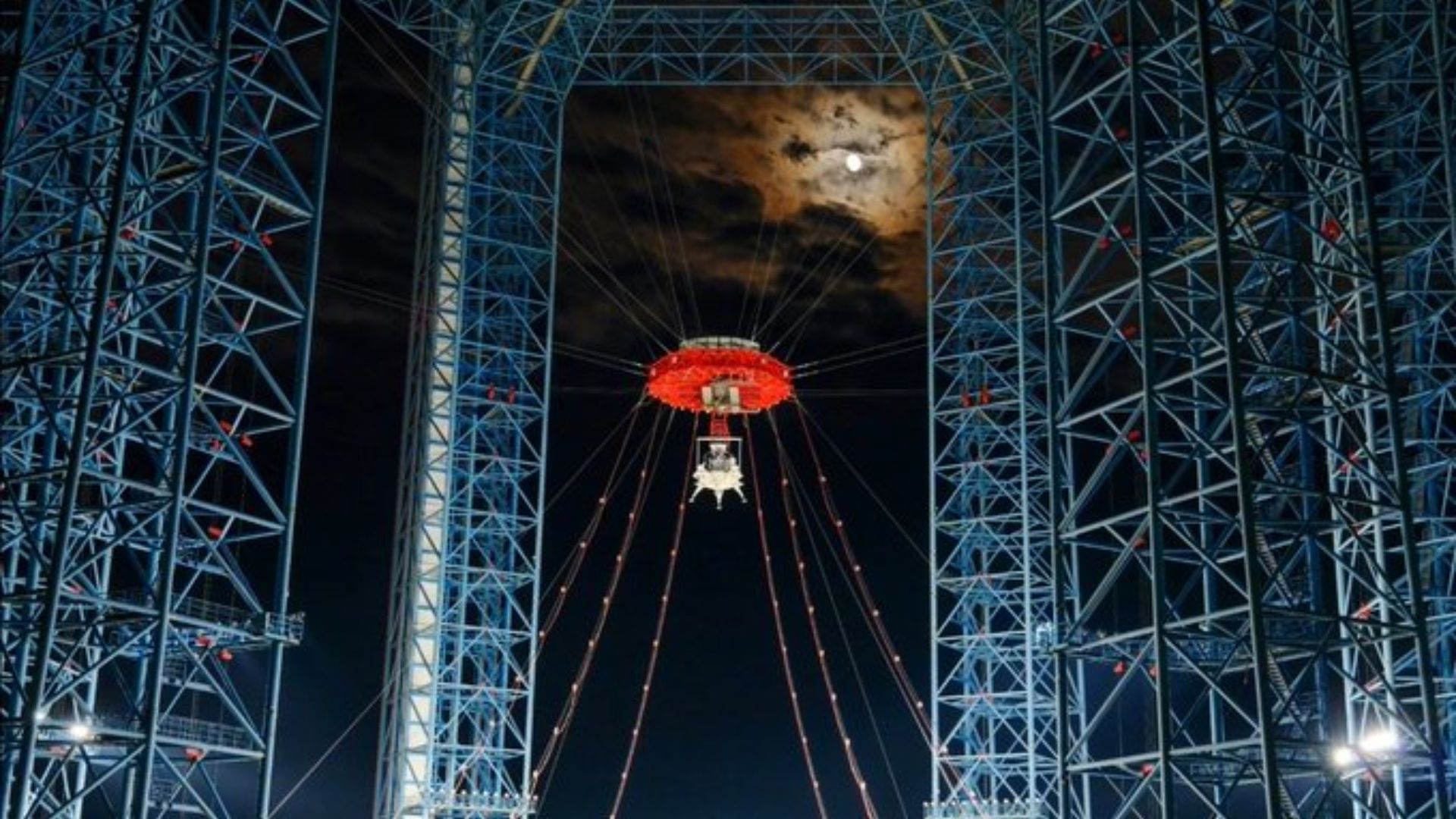New Delhi: China has announced that it has successfully conducted a landing and takeoff test of its crewed lunar lander at a dedicated test site in Hauailai County, in North China’s Hebei Province. The tests were completed last Wednesday, and are a significant step in China’s crewed lunar exploration programme, and the first test demonstrating the landing and takeoff capabilities of a spaceship by the China Manned Space Agency. The lunar landing consists of a landing module and a propulsion module, and is a brand new spaceship developed specifically for providing access to the lunar surface.
The Chinese lunar lander has a capacity to transport two taikonauts or Chinese astronauts between lunar orbit and the lunar surface, and can also carry scientific payloads along with the Chinese Moon buggy, a rover for exploring the lunar surface. The lander also serves as a life-support centre, a data centre, and the energy source for lunar surface operations, essentially doubling up as a mobile base in addition to a spaceship. China is advancing rapidly through the milestones for its crewed lunar landing programme, previously conducting a pad abort test of its spaceship, and demonstrating the test stand for the lunar lander.
Hardware for Chinese crewed missions to Moon
China is developing the hardware necessary for sustained human presence on the Moon under an accelerated programme. The launch vehicle is the Long March 10, the mightiest rocket in China’s fleet. The spaceship or crew capsule is named Menghzhou or ‘Dream Boat’, while the Lunar Lander, is named Lanyue or ‘Embracing the Moon’. China is also developing an unpressurised buggy for surface exploration, named Tansuo or ‘Exploring the Cosmos’, with the spacesuit for lunar exploration named Wangyu or ‘Gazing into the Cosmos’. The names for all of these elements were picked after outreach campaigns on Chinese social media. China is aiming for a crewed landing on the Moon by 2030, and building a Moon Base by 2035.
